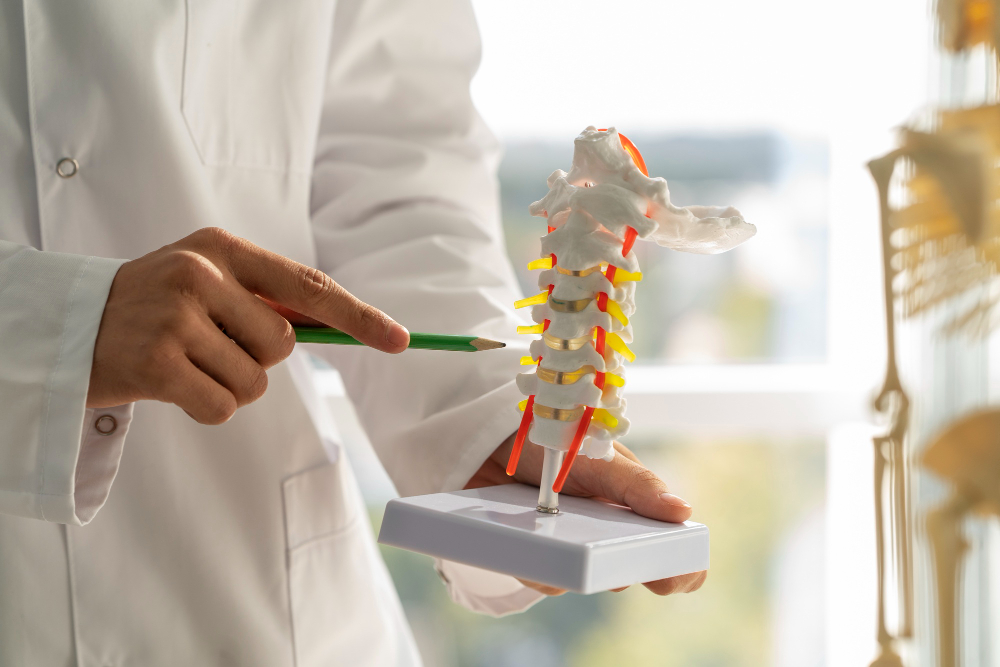
Cervical disc replacement is becoming an increasingly popular alternative to traditional spinal fusion surgery. It's a surgical procedure that involves replacing a damaged or degenerated cervical disc with an artificial disc to help preserve the range of motion in the neck. The procedure has been shown to reduce pain, improve function, and increase patient satisfaction. But before you consider undergoing cervical disc replacement, it's important to understand what it is and what it entails.
In this blog post, we'll discuss everything you need to know about cervical disc replacement. We'll explore the benefits and risks of the procedure, who is a good candidate for the surgery, what to expect during recovery, and more. So if you're considering cervical disc replacement, keep reading to learn more.
1. What is a Cervical Disc Replacement?
A cervical disc replacement is a surgical procedure that involves removing a damaged or degenerated cervical disc and replacing it with an artificial disc. The artificial disc is designed to mimic the function of a natural disc, allowing the neck to move naturally. The procedure is typically performed to treat chronic neck pain, herniated discs, and other degenerative disc conditions.
2. Benefits of Cervical Disc Replacement
Cervical disc replacement has several advantages over traditional spinal fusion surgery. Unlike fusion surgery, which permanently fuses two vertebrae together, cervical disc replacement preserves the natural range of motion in the neck. This can help patients maintain flexibility, reduce the risk of adjacent disc degeneration, and improve overall quality of life. Additionally, cervical disc replacement has been shown to reduce pain and improve function in patients with cervical degenerative disc disease.
3. Who is a Good Candidate for Cervical Disc Replacement?
Cervical disc replacement is typically recommended for patients who have a single level of cervical degenerative disc disease and have not responded well to non-surgical treatments such as physical therapy, medications, and injections. Other factors that may make a patient a good candidate for cervical disc replacement include being in overall good health, having a healthy weight, and having no spinal abnormalities such as scoliosis.
4. What to Expect During Recovery
Recovering from cervical disc replacement typically takes several weeks to months, depending on the patient. During the first few weeks, patients may need to wear a neck brace to limit movement in the neck and allow the disc to fuse to the surrounding bone. Patients will also need to attend physical therapy to help regain neck strength and flexibility. Over time, patients should be able to return to normal activities, although they may need to avoid high-impact sports and activities that place excessive stress on the neck.
5. Risks of Cervical Disc Replacement
Like any surgery, cervical disc replacement carries some risks, including infection, bleeding, nerve injury, and spinal cord injury. Additionally, there is a risk that the artificial disc may fail, which may require additional surgery. However, these risks are relatively low, and most patients who undergo cervical disc replacement experience positive outcomes.
Conclusion
Cervical disc replacement is an effective surgical procedure that can help patients with chronic neck pain and degenerative disc conditions. The procedure has several advantages over traditional spinal fusion surgery, including preserving the natural range of motion in the neck. If you're considering cervical disc replacement, it's important to speak with an orthopedic surgeon to determine if it's the right option for you. At Central Florida Bone & Joint Institute, we offer a range of treatment options for neck and back pain, including cervical disc replacement. If you're looking for an orthopedic surgeon in Deland, FL, contact us today to learn more.